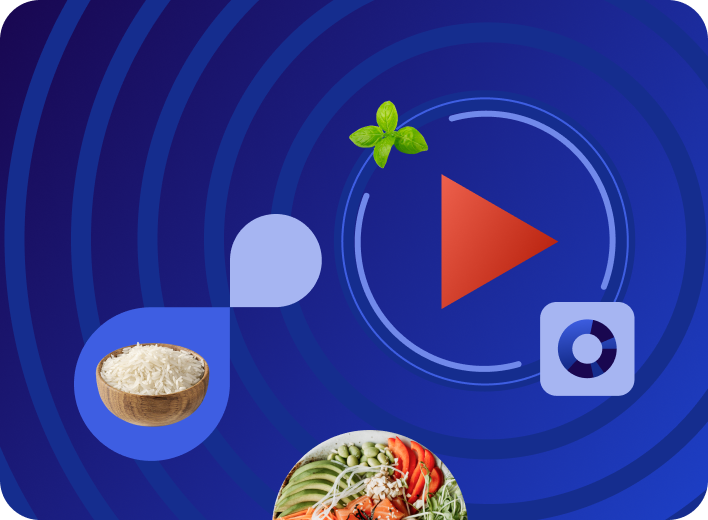Water Kefir vs Milk Kefir: What’s Trending and Why it Matters
Functional beverages are reshaping the shelves, and none more so than the rising stars in the fermentation world: water kefir and milk kefir.
The rise of functional beverages has sparked fresh debates like Water kefir vs Milk kefir—each with a loyal following and a growing slice of the health-conscious market.
According to recent data from Tastewise, social discussions around water kefir have grown by 28.57% year-over-year, while milk kefir also shows steady traction with a 16.42% YoY growth.
So what’s fueling these kefir trends, and where do they intersect with broader milk trends, yogurt trends, and even drinking water trends? Let’s unpack it all.
What is water kefir?

Water kefir is a lightly fermented, slightly effervescent drink made by adding water kefir grains, composed of bacteria and yeast, to sugar water, fruit juice, or coconut water.
It’s dairy-free, which makes it attractive to the growing vegan and lactose-intolerant audience, and it carries significant appeal among those looking for better gut health and hydration.
According to Tastewise data, 58% of discussions around water kefir are tied to healthy living, with another 41% centered on probiotics.
That positions it firmly within kombucha trends, as consumers continue to seek out tangy, gut-friendly drinks.
What is milk kefir?
Milk kefir, on the other hand, is a probiotic-rich drink traditionally made from cow, goat, or sheep milk fermented with kefir grains.
It’s thicker than water kefir and more aligned with yogurt trends. As it’s packed with protein, fermented cultures, and live probiotics, it’s often seen as a gut-friendly powerhouse for people following milk trends or high-protein diets.
Comparing water kefir vs milk kefir
| Category | Water Kefir | Milk Kefir |
| Base Ingredient | Sugar water, coconut water, or fruit juice | Dairy milk (cow, goat, etc.) |
| Calories | Lower (approx. 20–40 per cup) | Higher (approx. 100–160 per cup) |
| Taste | Light, sweet, sometimes fruity | Tangy, sour, creamy |
| Fermentation | 24–48 hours with water kefir grains | 24–48 hours with milk kefir grains |
| Texture | Clear, slightly fizzy | Creamy, similar to drinkable yogurt |
| Health Focus | Hydration, probiotics, low-calorie | Gut health, protein, strong probiotic content |
| Diet Suitability | Vegan, lactose-free | High-protein, probiotic-rich diets |
Trends and performance
Both drinks ride strong waves in kefir trends, but they diverge when viewed through the lens of consumer needs.
Water kefir ranks high for “hydration” and “cleansing” needs, with emerging interest in low sodium and versatility, according to Tastewise’s trend dashboard.
The discussion around this beverage is stable and mostly tied to functional and fermented food seekers.
Milk kefir, meanwhile, has carved a niche in curd trends and yogurt trends due to its creamy texture and higher protein value.
It’s more often seen in breakfast menus and health-forward recipes, especially in foodservice settings.
Sales and consumption
Sales data suggest that while milk kefir has higher grocery store visibility, water kefir is fast catching up, thanks to its flexibility in flavoring and appeal to a dairy-free crowd.
On social media, water kefir lags slightly behind milk kefir in share (0.005% vs 0.022%) but shows stronger year-over-year growth, suggesting its newer status and expanding fan base.
Tastewise identifies both products in trend performance tools across recipes, menus, and social content, giving F&B teams a clear direction for innovation and rollout.
This makes product ideation faster and sharper, from packaging claims to shelf positioning.
Popularity and audience
Milk kefir is more established with older demographics and health-conscious shoppers familiar with probiotic dairy products.
It appeals especially in the context of high-protein diets and breakfast consumption.
Water kefir has a younger, more adventurous audience—one that’s already into kombucha trends and drinking water trends.
They’re looking for new flavors, lightness, and clean ingredient labels. These consumers are also more likely to care about whether a product supports whole30 or low glycemic diets.
FAQs
That depends on your dietary goals. If you’re aiming for hydration, fewer calories, and dairy-free options, water kefir may be better. If protein and gut health are priorities, milk kefir is a strong contender.
Not directly. They use different types of grains: water kefir grains thrive in sugar water environments, while milk kefir grains need dairy to survive.
Conclusion
Water kefir vs Milk kefir isn’t about one being better than the other—it’s about knowing what your audience wants.
With yogurt trends leaning protein-heavy and drinking water trends exploring probiotic-rich hydration, both have their moment. The real power lies in tapping data to guide the way.
Let’s make that data work for you. With Tastewise, trend forecasting isn’t just faster—it’s smarter.


